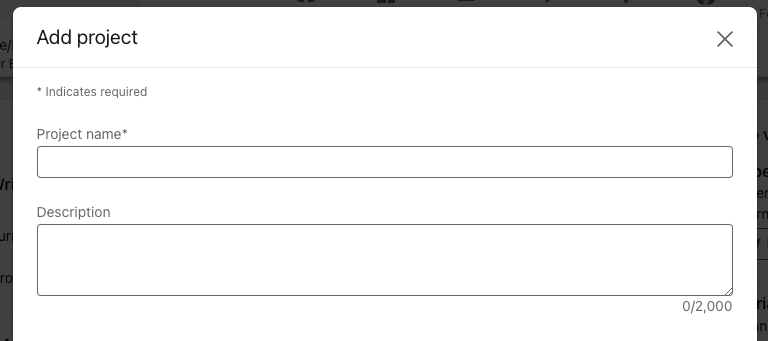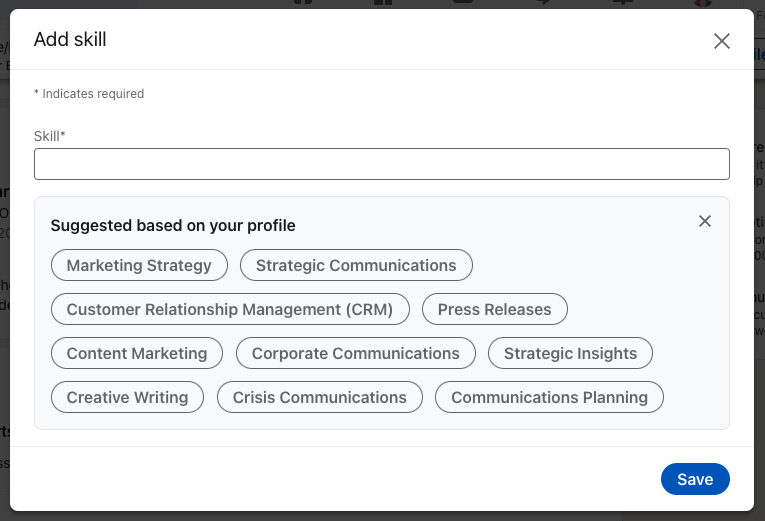These days, sharing your freelance work on LinkedIn is just as common as sharing a copy of your resume.
As a freelancer, I’ve found that hiring managers rarely request a resume, but almost everyone asks for a link to your LinkedIn profile. Combined with your portfolio, it’s often what potential clients use to assess whether or not you’re a fit for the job.
However, it can be hard to showcase freelance experience on LinkedIn since the platform caters to those employed in a traditional job. With a little patience and some workarounds, freelancers can take advantage of the same features to build their network and find work. Here’s how.
Highlight your experience
While freelancing differs from a traditional 9-5, you can still use LinkedIn to highlight your work experience. And since LinkedIn is a living, breathing resume, you should update it regularly so it accurately represents where you are in your career.
Create a compelling headline
Rather than listing “freelance writer” as your title, get specific on the value you provide to your clients. Craft a value-based, actionable headline showcasing your unique offering and use it as your title on your profile. Don’t forget to indicate that you’re a freelancer by using the words “freelance” or “freelancer” in your headline, as this is how people will find you as a freelancer.
Here’s mine:
Give a good first impression
Think of your summary as a cover letter that you can use to introduce yourself to profile visitors. Use your summary to highlight your credentials (degrees and certificates), years of experience, and your niche and industry. If you’re a writer, your summary is a great place to list the publications where you have bylines. Use your summary to inject personality into your profile by sharing personal interests, messaging, or anything else to help visitors get to know you better.
Here’s my summary:
Share your featured work
The featured work section is a great place to share recent articles you wrote, press features, your side projects, and your portfolio (such as your Contently portfolio). Add samples of your best work or anything else you’re proud of and want prospective clients to want to see.
Add results and metrics
You can use the experience section to provide a high-level overview of your services and how your clients benefit from them. Add metrics that showcase the results you’ve achieved for your clients (“increased page views by 40 percent” or “ranked number one on Google”). You can mention some clients you’ve worked with (with their permission, of course).
Ask for recommendations
Testimonials are the best social proof a freelancer can get, as this can help other prospective clients understand what it’s like working with you. Ask your former clients if they’d be willing to write you a recommendation that you can use on your LinkedIn profile.
Endorse your skills
Endorsed skills catch the eye of hiring managers and can boost your credibility. They show you have more expertise, which can help you stand out as you pitch potential clients. Ask your peers, former coworkers, and clients if they can endorse some of your top skills.
Build your network and find freelance work on LinkedIn
In addition to showing your experience, LinkedIn is a powerful tool for building your network and finding work. Here are some best practices for optimizing your profile to fill your pipeline.
1. Incorporate keywords
Weave keywords throughout your headline, summary, and skills highlighting your skills, industry, and niche. For example, if you are a graphic designer who works with software-as-a-service (SaaS) companies, make sure the terms “graphic design” and “SaaS” show up multiple times in your profile. This makes it easier for hiring managers to find you and assess whether you have the right set of skills they’re looking for.
2. Grow your network
Follow brands (and hiring managers) you want to work with, people you want to engage with, industry leaders, and other freelancers you can collaborate with. By following the people who could hire you and engaging with their content, you establish a warm connection with them. When you find someone you want to connect with, send them a short, personalized message. Keep it relevant, always providing a specific reason and context as to why you want to connect.
3. Find work
There are several ways freelancers can find work through LinkedIn:
- Pitching. Go to the company page and search the “people” section to find the right person to pitch to. Give them a follow, engage with some of their posts, and when you feel like you’re on their radar, go ahead and send them a pitch.
- Use your network. Message your connections to see if they are looking for freelance help. Additionally, pay attention to position changes or new ventures from your connections and use them as opportunities to pitch your services.
- Search hashtags. Search hashtags to find new opportunities in your industry or for your service type. Most of the time, if people are looking for a freelancer, they will tag their post with “#freelance” or their industry (“#saas”).
- Respond to LinkedIn job posts. You can use the job board just like you would if you were looking for a full-time job. Make sure to filter for “temporary,” “part-time,” or “contract” jobs.
- Add “for hire” or “open to work” in your headline. Let your network and hiring managers know you are open for work by including it in your headline, summary, and profile picture.
- Complete the “services” feature. Add your freelance services as a LinkedIn service so people can see what you offer when they visit your profile page.
- Call for work. Remind people you’re looking for work and what kind of work you’re looking for by posting on LinkedIn. You’ll want to include what you do, how they can contact you, and a link to your website or portfolio.
Just because you’re a freelancer doesn’t mean you can’t take advantage of what LinkedIn offers to showcase your experience, grow your network, and find work. By optimizing your profile, you can make LinkedIn a go-to resource in your tool stack.
Go to Source
Author: Alexa Phillips




